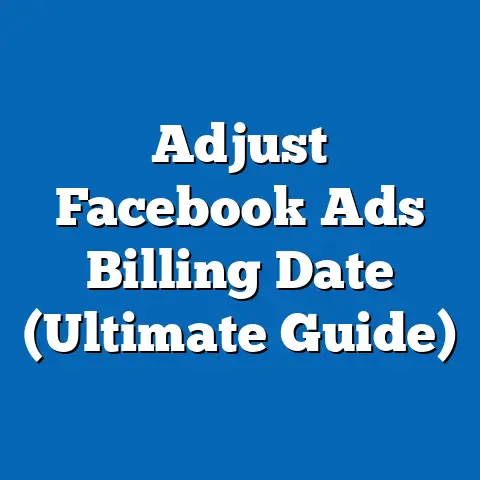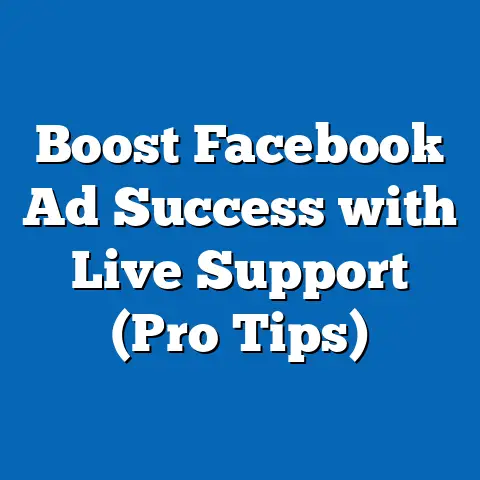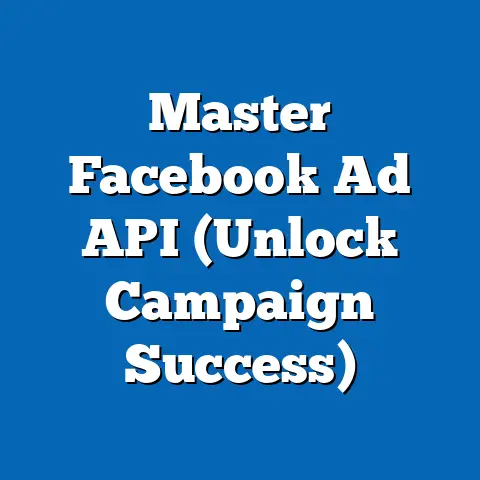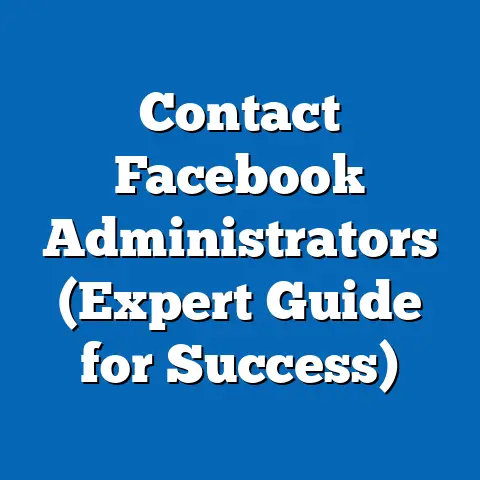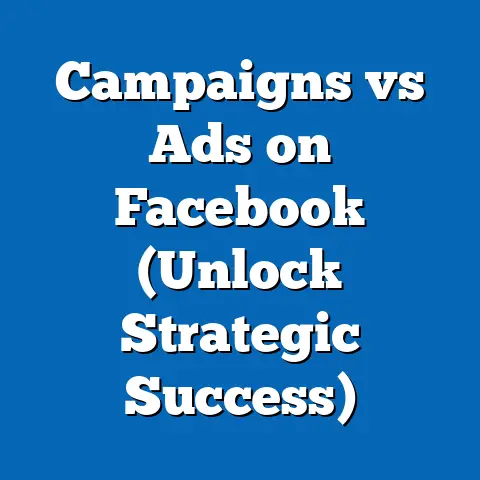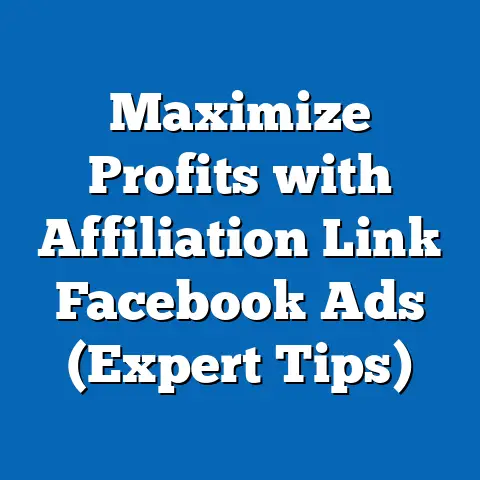Maximize Reach with Ideal Facebook Audience Size (Pro Tips)
Have you ever felt like you’re shouting into the void with your Facebook ads? I know I have. I remember one campaign I ran for a local bakery – I was so excited about the delicious-looking visuals and catchy copy, but the results were… underwhelming. It felt like I was throwing money into a black hole, and the frustration was real.
I spent countless late nights poring over metrics, trying to decipher why my ads weren’t resonating. The sinking feeling of an underperforming campaign is something no marketer wants to experience. On the flip side, the sheer excitement of finally cracking the code and seeing a campaign truly connect with the right audience is incredibly rewarding. It’s like finding the perfect key to unlock a treasure chest of potential customers.
In today’s competitive digital landscape, the pressure to deliver results is immense. That’s why understanding audience size is absolutely critical for maximizing your ad reach on Facebook. It’s not just about the creative or the budget; it’s about finding the sweet spot where your message connects with the people most likely to convert. Let’s dive into how you can achieve that.
Understanding Audience Size
When I talk about “audience size” in the context of Facebook ads, I’m referring to the estimated number of people who meet the criteria you’ve set for your target audience. This includes factors like demographics, interests, behaviors, and connections. Facebook offers a wide range of targeting options, allowing you to create highly specific audiences.
Think of it this way: you have a toolbox filled with different targeting tools. You can build your audience using:
- Custom Audiences: These are audiences you create based on your own data, such as customer lists, website visitors, or app users. For example, I once uploaded a list of email subscribers for a client and created a custom audience to re-engage them with a special offer.
- Lookalike Audiences: These audiences are created by Facebook based on the characteristics of your existing customers or website visitors. They’re essentially a clone of your best customers, helping you reach new people who are likely to be interested in your products or services. I’ve found lookalike audiences to be incredibly effective for scaling campaigns and expanding reach.
- Broad Targeting: This involves targeting based on demographics, interests, and behaviors, without using any specific data from your own sources. It’s a good option for reaching a wider audience and discovering new potential customers. However, it can also be less efficient than custom or lookalike audiences.
The size of your audience can have a significant impact on your ad performance. Here’s why:
- Engagement Rates: A smaller, more targeted audience is often more engaged with your ads because they’re highly relevant to their interests and needs. This can lead to higher click-through rates (CTR) and lower costs per click (CPC).
- Cost-Effectiveness: Reaching a large, unqualified audience can be expensive and inefficient. By targeting a smaller, more qualified audience, you can often get more bang for your buck and achieve better results with a smaller budget.
- Ad Fatigue: If your audience is too small, your ads may start to feel repetitive and annoying, leading to ad fatigue and decreased engagement. On the other hand, if your audience is too large, your ads may get lost in the noise and fail to make an impact.
According to a study by HubSpot, businesses that use audience targeting see a 50% increase in lead generation. That’s a significant boost! I’ve personally seen similar results when I’ve focused on refining my audience targeting.
Takeaway: Understanding audience size is crucial for optimizing your Facebook ad campaigns. By targeting the right audience, you can improve engagement rates, reduce costs, and achieve better overall results.
The Ideal Audience Size for Maximum Reach
So, what exactly is the “ideal audience size” for Facebook ads? The truth is, there’s no one-size-fits-all answer. It depends on a variety of factors, including your budget, your campaign goals, and your target audience.
However, I can offer some general guidelines based on my experience and industry best practices. As a rule of thumb, I recommend aiming for an audience size of between 500,000 and 1 million people for most campaigns. This provides a good balance between reaching a large enough audience to generate meaningful results and targeting a specific enough audience to ensure relevance and engagement.
Of course, there are exceptions to this rule. For example, if you’re running a brand awareness campaign, you may want to target a larger audience to reach as many people as possible. On the other hand, if you’re running a highly targeted lead generation campaign, you may want to focus on a smaller, more qualified audience.
Here’s how I think about it:
- Niche Audience: Targeting a niche audience can be incredibly effective if you have a highly specialized product or service. For example, if you’re selling organic dog treats, you might want to target dog owners who are interested in organic food and healthy living. The key here is to make sure your audience is large enough to generate enough leads or sales.
- Wider Net: Casting a wider net can be a good strategy for reaching new potential customers and expanding your brand awareness. However, it’s important to make sure your targeting is still relevant to your product or service. For example, if you’re selling athletic apparel, you might want to target people who are interested in fitness, sports, and outdoor activities.
I remember one campaign I ran for a local gym. Initially, I targeted a very broad audience of people aged 18-55 who lived within a 10-mile radius of the gym. The results were underwhelming – we were getting a lot of impressions, but not a lot of leads.
After analyzing the data, I realized that our target audience was much more specific. We were most successful with people aged 25-45 who were interested in fitness classes, personal training, and healthy eating. By narrowing down our audience, we were able to significantly improve our lead generation and conversion rates.
According to a study by Facebook, advertisers who use detailed targeting see a 20% increase in ad recall. That’s a significant improvement!
Takeaway: The ideal audience size for Facebook ads depends on your specific goals and target audience. As a general rule, aim for an audience size of between 500,000 and 1 million people, but be prepared to adjust your targeting based on your campaign results.
Pro Tips for Defining Your Audience
Now that you understand the importance of audience size, let’s dive into some actionable tips for defining and refining your target audience effectively. These are the strategies I use every day to help my clients achieve their advertising goals on Facebook.
Utilizing Audience Insights
Facebook’s Audience Insights tool is a goldmine of data about potential customers. It allows you to gather information about demographics, interests, behaviors, and connections. I use this tool extensively to understand my target audience better.
Here’s how I use Audience Insights:
- Start with a Seed Audience: Begin by selecting a seed audience, such as your Facebook page fans, website visitors, or customer list.
- Explore Demographics: Analyze the demographic data to understand the age, gender, education level, and relationship status of your audience.
- Identify Interests: Discover the interests and hobbies of your audience by exploring the “Page Likes” and “Interests” sections.
- Analyze Behaviors: Understand the online behaviors of your audience, such as their purchase habits, device usage, and travel patterns.
- Refine Your Targeting: Use the insights you’ve gathered to refine your targeting options in your ad campaigns.
For example, I was working with a client who sold handmade jewelry. Initially, they were targeting a broad audience of women aged 25-55 who were interested in fashion and accessories. After analyzing their Facebook page fans in Audience Insights, I discovered that their audience was actually much more specific: women aged 30-45 who were interested in artisan crafts, sustainable living, and ethical fashion. By refining their targeting, we were able to significantly improve their ad performance.
Segmentation Strategies
Segmentation is the process of dividing your audience into smaller, more specific groups based on shared characteristics. This allows you to create more targeted and relevant ads that resonate with each segment. I use a variety of segmentation strategies, including:
- Geographic Segmentation: Targeting people based on their location, such as country, state, city, or zip code. This is useful for businesses that have a local presence or offer location-specific products or services.
- Psychographic Segmentation: Targeting people based on their values, attitudes, interests, and lifestyles. This is useful for understanding the motivations and desires of your audience.
- Behavioral Segmentation: Targeting people based on their online behaviors, such as their purchase history, website activity, and app usage. This is useful for reaching people who are likely to be interested in your products or services.
For example, I was working with a client who sold online courses. I segmented their audience based on their level of experience: beginners, intermediate, and advanced. I then created different ads for each segment, highlighting the specific benefits of the course for their level of expertise. This resulted in a significant increase in enrollment rates.
Testing and Iteration
Testing and iteration are essential for optimizing your Facebook ad campaigns. You should always be testing different targeting options, ad creatives, and landing pages to see what works best for your specific audience.
I recommend conducting A/B testing with different audience sizes to find the sweet spot for your campaigns. This involves creating two or more versions of your ad with different audience sizes and tracking their performance over time.
Here’s how I approach A/B testing audience sizes:
- Create Two Ad Sets: Duplicate your ad set and adjust the audience size in one of the ad sets.
- Run the Ads Simultaneously: Run both ad sets simultaneously for a period of time, such as one week.
- Track Performance: Track the performance of each ad set, including impressions, clicks, conversions, and cost per conversion.
- Analyze Results: Analyze the results to see which audience size performed better.
- Iterate and Refine: Based on the results, iterate and refine your targeting options to further optimize your campaigns.
I once ran an A/B test for a client who sold subscription boxes. I tested two audience sizes: 500,000 and 1 million. After one week, I found that the smaller audience size (500,000) had a significantly higher conversion rate and a lower cost per conversion. Based on these results, I decided to focus on the smaller audience size and scale the campaign accordingly.
Takeaway: Defining your audience effectively requires a combination of data analysis, segmentation strategies, and testing. By utilizing Audience Insights, segmenting your audience, and conducting A/B testing, you can find the ideal audience size for your Facebook ad campaigns.
Tools and Resources for Audience Management
Fortunately, there are many tools and resources available to help you manage and target your audience on Facebook. Here are some of my favorites:
- Facebook Audience Insights: As I mentioned earlier, this is a powerful tool for gathering data about potential customers.
- Facebook Ads Manager: This is the main platform for creating and managing your Facebook ad campaigns.
- Facebook Pixel: This is a piece of code that you can install on your website to track conversions and build custom audiences based on website visitors.
- HubSpot: This is a marketing automation platform that integrates with Facebook Ads and allows you to manage your leads and customers more effectively.
- AdEspresso: This is a third-party tool that helps you create and manage your Facebook ad campaigns more efficiently.
I often recommend that my clients use a combination of native Facebook tools and third-party applications to enhance their audience targeting capabilities. These tools can help streamline the process and lead to better results.
Takeaway: Utilizing the right tools and resources can significantly improve your audience management and targeting efforts on Facebook.
Conclusion
Understanding and optimizing audience size is a critical factor in maximizing your reach and achieving your advertising goals on Facebook. By defining your audience effectively, you can improve engagement rates, reduce costs, and achieve better overall results.
Remember, there’s no one-size-fits-all answer to the question of “ideal audience size.” It depends on your specific goals, target audience, and budget. But by following the tips and strategies I’ve shared in this article, you can find the sweet spot for your campaigns and unlock the full potential of Facebook advertising.
I hope this article has empowered you with the knowledge and tools you need to maximize your reach and achieve your advertising goals on Facebook.
Call to Action
Now it’s your turn! I encourage you to take the insights and tips I’ve provided and apply them to your own campaigns. Experiment with different audience sizes, targeting options, and segmentation strategies to see what works best for your business.
I’d love to hear about your experiences with Facebook ads. Share your own tips, challenges, and successes in the comments below. And if you’re looking for personalized advice on optimizing your audience targeting strategies, feel free to reach out to me directly.
For more tips and insights on digital marketing, subscribe to my newsletter or follow me on social media. Together, we can unlock the full potential of Facebook advertising and achieve our business goals. Let’s connect and learn from each other!

